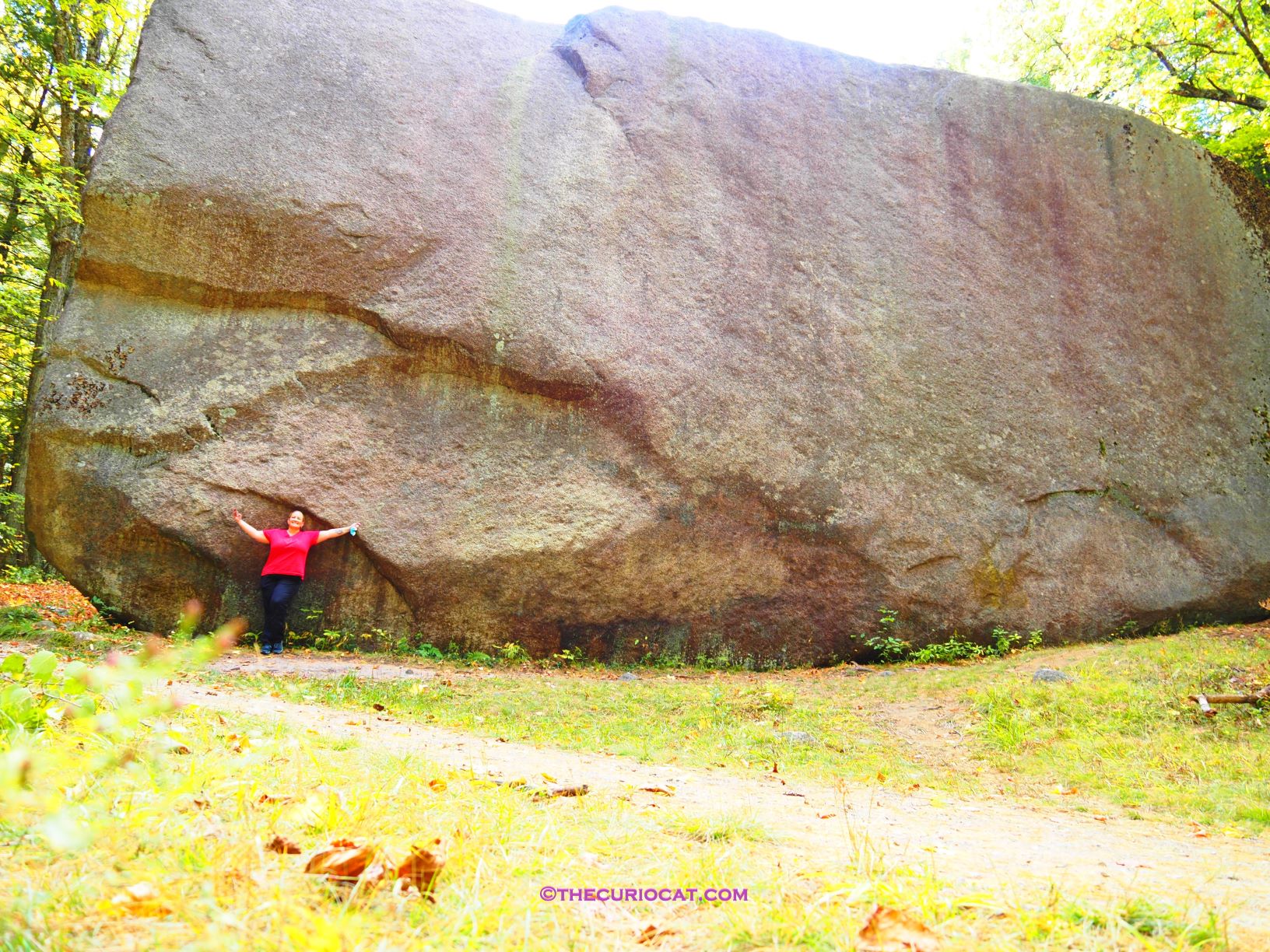Down a rocky, dirt road, six miles into nowhere, on the edge of New Hampshire’s White Mountain National Forest, lies the largest rock in North America – and maybe even the world! We’re talking about the Madison Boulder…join us as we explore this natural wonder!

Road to the Boulder 
Trail to the Boulder

What Is the Madison Boulder?
The Madison Boulder is known as a “glacial erratic”. It’s granite – made of fine-grained feldspar and some larger quartz crystals, molded under pressure from a deep molten mass in the earth over 200 million years ago! Notably, the granite withstood millions of years of erosion from wind and water. Also, the Granite State is another moniker for New Hampshire due to the vast quantities of granite found there!
Just How Big (and How Old) Is the Madison Boulder?
The Madison Boulder measures 87 feet (or 25 meters) long (left to right), 23 feet (or 7 meters) tall, and 37 feet (or 11 meters) wide (front to back). Also, the boulder is partially buried at about 10-12 feet underground! And it comes in at almost a whopping 5,963 tons. Or 11,926,000 lbs. if you prefer. That’s the weight of almost 36 blue whales!! And recently scientists have been able to determine that the boulder is around 14,000 years old!


1922 Postcard
How Do They Know It’s Weight?
Because they aren’t able to put this massive stone on a scale, scientists must estimate its weight. First, they determined that a cubic foot of the Conway Granite weights about 164.86 lbs. Consequently, scientists did a calculation using this information and the boulder’s size and voila – they determined the weight!

How Did It Get There?
During the last ice age, more than 25,000 years ago, a sheet of packed ice and snow covered the entire area, more than a mile thick! This ice sheet moved slowly in a southeasterly direction, even across the highest mountains! As it crawled along, the sheer force and size caused it to break off large pieces of rock and carry them along. As it “retreated”, it left these monstrous boulders behind.

Image by NASA Johnson Space Center of Upsala Glacier carrying boulders — a remnant of the Patagonia Ice Sheet in South America
Where Did It Come From?
Scientists believe Conway Granite is what comprises the Madison Boulder. Coincidentally, Conway Granite also comprises The Whitton Ledge, about 2 miles to the northwest. Therefore, they’ve concluded the ice sheet must’ve carried the boulder from that location. Hence, this assumption is the most widely accepted. However, some believe the Madison Boulder is comprised of rock type from Mount Willard, some 24 miles northwest in Crawford Notch! And they believe the ice sheet carried it from there! I’m curious – what do you think?

If you’d like to learn more about the author, Hannah, click here!





Interesting information!